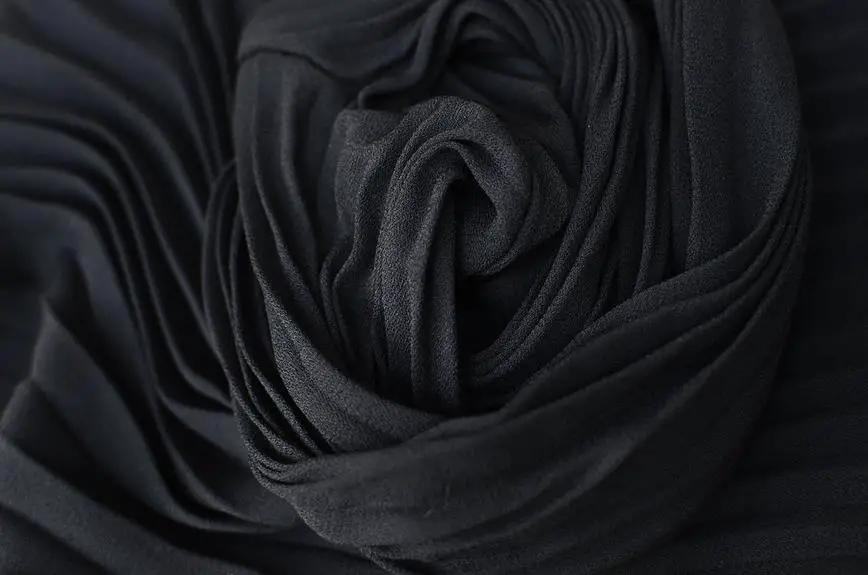So, you've got some grey fabric and you're wondering if it can be dyed. The answer is yes! Dyeing grey fabric opens up a world of color options, allowing you to personalize your fabric to suit your style.
This process requires careful consideration and precision to achieve the desired results. Understanding the dyeing process, selecting the right fabric dye, and preparing the grey fabric are essential steps in achieving mastery in the art of fabric dyeing.
You'll also have the opportunity to experiment with different color combinations to create unique and vibrant fabrics. With the right techniques, you can achieve stunning results and enjoy your dyed fabrics for years to come.
Key Takeaways
- Dyeing techniques vary based on the type of dye and fabric.
- Understanding fabric and dye requirements is crucial for successful dyeing.
- Different dyeing techniques and dyes can impact color fastness.
- Consider fabric compatibility and color fastness when selecting a dye.
The Dyeing Process Explained
You can dye grey fabric by immersing it in a dye solution, allowing the color to penetrate the fibers. Dyeing techniques vary based on the type of dye and fabric. For natural fibers like cotton or silk, direct dyeing involves immersing the fabric in a dye bath. Alternatively, for synthetic fibers such as polyester, disperse dyes are used, requiring higher temperatures for the dyeing process. The key to successful dyeing lies in understanding the specific requirements of the fabric and dye being used.
Color fastness is a crucial factor to consider when dyeing grey fabric. It refers to the fabric's ability to retain the newly applied color without fading or bleeding during subsequent washes or exposure to light. Different dyeing techniques and dyes can impact color fastness. For instance, fiber-reactive dyes are known for their excellent color fastness on natural fibers, while acid dyes offer superior color fastness on protein-based fibers like wool. Understanding the intricacies of dyeing techniques and their impact on color fastness is essential for achieving the desired results when dyeing grey fabric.
Choosing the Right Fabric Dye
When selecting the right fabric dye, consider the specific requirements of the fabric and the desired color outcome, ensuring compatibility for successful dyeing. Choosing fabric color and dyeing techniques play a crucial role in achieving the desired results. Here are some key points to consider when choosing the right fabric dye:
- Fabric Compatibility: Ensure that the dye you choose is suitable for the type of fabric you're dyeing. Different dyes work best with specific fabrics, so it's important to match the dye to the fabric type.
- Color Fastness: Consider the color fastness of the dye, especially if the dyed fabric will be exposed to sunlight or frequent washing. Opt for dyes that offer good color retention over time.
- Application Method: Determine the dyeing technique that best suits your project, whether it's immersion dyeing, direct application, or tie-dyeing. The method you choose can influence the final color outcome.
- Environmental Impact: Consider the environmental impact of the dye. Look for eco-friendly options that minimize harm to the environment during the dyeing process.
Tips for Preparing Grey Fabric
To prepare grey fabric for dyeing, start by thoroughly washing it to remove any dirt, oils, or finishes that may hinder the dye absorption process. Use a mild detergent and follow the fabric care instructions to avoid damaging the fibers. After washing, rinse the fabric to ensure that all detergent residue is removed.
Next, consider pre-treating the fabric with a color fixative to enhance color fastness. This step is particularly important for achieving vibrant and long-lasting color results. Additionally, if the fabric is a blend of different materials, such as cotton and polyester, it may require different pre-treatment methods for each type of fiber to ensure uniform dye absorption.
Moreover, carefully inspect the fabric for any stains or imperfections that could affect the dye application. Address these issues before proceeding with the dyeing process.
Lastly, ensure that the fabric is completely dry before applying the dye, as wet or damp fabric can impact the dye application and result in uneven color distribution. Following these fabric preparation steps will pave the way for successful and satisfying dye application techniques.
Experimenting With Color Combinations
How can you creatively combine different dye colors to achieve unique and vibrant hues on grey fabric? Experimenting with color combinations opens up a world of possibilities, allowing you to create stunning and personalized shades. Utilizing color theory principles will help you understand how different colors interact and can be combined to produce the desired effect. Here are some essential steps to consider when experimenting with color combinations:
- Understanding Color Theory: Familiarize yourself with the color wheel and the relationships between primary, secondary, and tertiary colors. This knowledge will guide your color mixing decisions and help you achieve the perfect hue.
- Fabric Swatch Testing: Before applying the dye to the entire fabric, conduct swatch tests to observe how the colors interact with the grey base. This will prevent any unexpected results and allow you to make adjustments as needed.
- Layering and Mixing Colors: Experiment with layering and mixing different dye colors to create unique and multi-dimensional shades. This process can lead to captivating and complex color variations.
- Balancing Warm and Cool Tones: Explore the balance between warm and cool tones to add depth and richness to your fabric. Understanding how these tones complement each other can result in visually striking combinations.
Caring for Dyed Fabrics
Caring for dyed fabrics involves preserving the vibrancy and longevity of the colors achieved through the dyeing process. It is essential to maintain the color fastness and overall quality of the fabric, especially after investing time and effort into dyeing it. When washing dyed fabrics, it is crucial to use a gentle detergent and wash them separately or with similar colors to prevent color bleeding. Additionally, avoid using fabric softeners and dryer sheets as they can affect the vibrancy of the dyes and reduce color fastness.
To ensure that your dyed fabrics remain vibrant and beautiful, here are some care tips to follow:
| Do's | Don'ts |
|---|---|
| Wash with a gentle detergent | Use fabric softeners |
| Wash separately or with similar colors | Use dryer sheets |
| Air dry or tumble dry on low heat | Dry on high heat |
| Store away from direct sunlight | Overload the washing machine |
Following these guidelines will help maintain the vibrancy and longevity of your dyed fabrics, ensuring that they continue to look stunning for a long time.
Frequently Asked Questions
Can Grey Fabric Be Dyed With Natural Dyes?
Yes, you can dye grey fabric with natural dyes. Options like indigo, madder, and walnut can achieve beautiful colors. Ensure color fastness by using proper mordants and following dyeing instructions carefully for best results.
What Are Some Common Mistakes to Avoid When Dyeing Grey Fabric?
When dyeing grey fabric, start by pre-treating it to remove any finishes. Choose the right dye for the fabric type and desired color. To avoid color bleeding and achieve even coverage, follow dye instructions carefully and use proper dyeing techniques.
Are There Any Special Considerations for Dyeing Synthetic Grey Fabric?
When dyeing synthetic fabric, consider the dyeing process and color fastness. Grey fabric may require special attention for achieving the desired color. Ensure to follow specific instructions for synthetic materials to achieve optimal results.
Can I Achieve Vibrant and Bold Colors When Dyeing Grey Fabric?
Yes, you can achieve vibrant and bold colors when dyeing grey fabric. Consider the fabric type for color fastness and explore various dyeing techniques and color mixing to achieve desired results.
How Can I Ensure an Even and Consistent Dye Application on Grey Fabric?
To ensure even and consistent dye application on grey fabric, pre-treat it by washing with a mild detergent to remove any finishes. Use dyeing techniques like immersion dyeing for optimal color absorption. Proper fabric preparation is key.
- How Does Ring Spun Cotton Affect Garment Fit and Shape Retention? - August 13, 2024
- What Are the Challenges in Producing Ring Spun Cotton? - August 13, 2024
- Is Ring Spun Cotton Suitable for Plus-Size Clothing? - August 13, 2024






